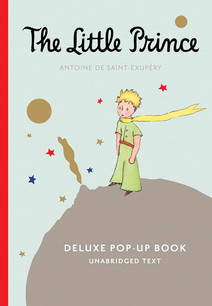August 2024 Edition: Back To School
- Becky Wright

- Aug 14, 2024
- 4 min read


It was a hot August afternoon for the families of the Upstate to schlep their children, grandchildren, nieces, and nephews to our bungalow-turned-studio in the Village of West Greenville but more than 60 of them came to see the third-generation silhouette artist and award-winning children's author, Clay Rice. It was a lively parade of perfect ponytails, big bows, and Peter Pan collars. Relatively few tears were shed or tantrums thrown, a phenomenon attributable partly to the availability of cake pops and lemonade, but mostly to the artist's skill and gentle way with children.
The tradition of silhouette artistry in the Rice family originated in 1930 with Clay Rice's Grandfather, Carew Rice, who not only created profiles but also pioneered the cutting of the evocative Lowcountry Landscapes for which both artists are renowned. Carew Rice infused a French tradition with his distinctly Southern viewpoint, developing a motif that would become emblematic of an entire region and passing that legacy and the legacy of profile silhouette to his Grandson.
Clay Rice takes approximately one minute to cut each child's profile, an incredible thing to witness. Wisps of hair, lashes, tiny noses, chubby cheeks - deftly rendered with scissors and paper. He estimates that he's cut more than one million profile silhouettes in his career. It is awe inspiring to consider the walls adorned, gifts treasured, moments captured, and memories evoked. Mr. Rice's day was slated to end at six o'clock but he allowed my boys to take their place in his chair at a quarter after. He ended with our youngest, who he first met at a similar event fourteen months ago. He finished the typical profile and I threw him a curveball in the form of a hat, a souvenir from a family trip to Colonial Williamsburg that has become our toddler's accessory of choice. It has been a peculiar phase, the baby refusing to leave the house without donning a tricorn head accessory, but I don't want to forget it. Mr. Rice paused thoughtfully while he considered the request and, with a few flicks of the wrist, graciously honored it (see silhouette above), closing out a day well spent serving the families of the Upstate.


The French 75
We're a Whiskey Winter, Champagne Summer kind of house and this sweltering Summer has been the season of the French 75. Our version is an adaptation of the recipe from the Cocktail Codex. Like the music of the Mississippi Basin or the art of Carew Rice, we've gotten excellent results from the marriage of French and Southern influences. We recommend using a good quality Brut Champagne, like Drappier Carte d'Or, and Dry American Gin, such as Roots of Ruin Dry Gin from the Kentucky-based distillery, Castle & Key. While some serve this libation in a Collins glass or a flute, we like to serve it in a delicate coupe like these from the Luigi Bormioli Sublime Collection. We've included our recipe card below so you can make your own at home. Cheers!




Drying Hydrangeas for Fall
My Mother's Day gift this year was the realization of a long-held dream, a hydrangea cutting garden so wonderfully abundant it would provide bouquets for keeping and sharing throughout the Summer months. This August we're experiencing the end of our first season of blooms. It's a bittersweet time for most cutting gardens but a magical one in the world of hydrangeas. The petite panicles of the Bobos are antiqued shades of white, green, and aubergine. The Limelights have faded to pale green. The Incrediballs are a vibrant chartreuse. Now our hydrangeas are ready to be cut for drying to capture the vivid colors for Fall and Winter arrangements, garlands, and wreaths.
There are many ways to dry hydrangeas - the vase method; hanging; and processes involving the use of silica. My go-to is vase drying.
To vase dry your hydrangeas, cut them to the desired length when they are just past maturity and the flowers take on a papery or leathery feel. If cut too early, the flowers will wilt rather than dry. Remove all leaves and place them in a clean vase with water and without other flowers or greenery. Then enjoy the wait. While this method may not give a 100% yield, you get to have beautiful bouquets throughout the drying process!


DESIGNING CAMELOT:
THE KENNEDY WHITE HOUSE RESTORATION AND ITS LEGACY
by James Archer Abbott and Elaine Rice Bachmann
This book was always at hand when I was designing our youngest's nursery, a concept based loosely on John-John's White House bedroom. It is a fantastic reference and an interesting read, complete with images of the original fabric swatches and mood boards.

THE DUTCH HOUSE
by Ann Patchett
This generation-spanning novel follows the lives of a brother and sister as their family is undone by a love of, or rather an obsession with, a house and the life that house represents. Heartbreaking, but ultimately hopeful, it is a beautiful story of family, loss, and the incredible impact a home can have on the course of our lives.

THE STICK
by Clay Rice
The Stick, written by our August feature artist, is a wonderful story of the power of imagination. Beautifully written and, of course, illustrated, this book has become a family favorite in our house.


With Pre-School starting this week for our youngest, I'm feeling nostalgic for this time two years ago when I was designing his nursery and preparing for his arrival. With a lot of research and a little luck, we managed to source some wonderful things that have proven the test of time and survived the onset of the Toddler Phase. From first rain boots to felted flocks to the ultimate diaper pail, we're sharing a few of our favorites with you this month. Click on the images below shop the blog.





























